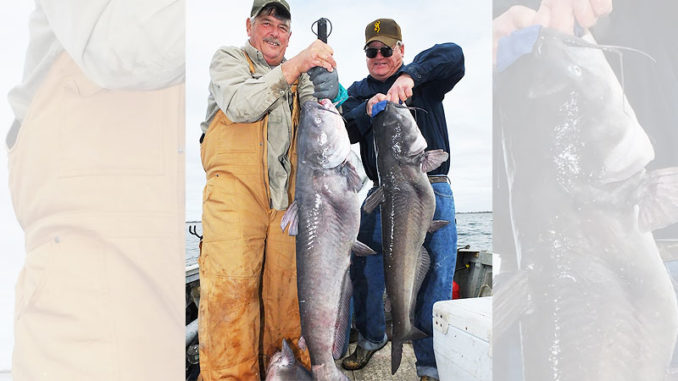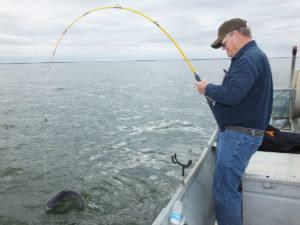
Cold weather sets up catfish on Santee Cooper lakes
Catfish anglers know that blue catfish thrive in lower water temperatures. But on the Santee Cooper lakes, Marion and Moultrie, one of the most-productive times is when the water temperature dips to the lowest point of the year.
Once you understand the process, it can happen for you.
Why and how
Tad Resser of Manning is a lifelong Santee Cooper fisherman. He considers finding and catching blue catfish during the winter to be his specialty and passion.
Reeser said the primary forage for blue catfish during winter is shad. The fishing really gets hot when the water temperature dips below 50 degrees.
“As the water temperature drops low, shad bunch up and get into huge, tight schools,” he said. “The process begins as early as December, but it’s often January before the shad really tighten up for the best fishing. Cold rain, snow and sleet are on my Christmas wish list, because a rapid decline in water temperature sets up ideal conditions.”
Reeser said as the shad schools grow ever larger and tighter, the falling water temperature slows their metabolic rate. They move more slowly, and blue catfish swarm them. When the water temperature drop is quick and dramatic, the best fishing follows.
“A perfect example was early January 2018, when we had a winter storm blow in, dropping snow on the lakes,” he said. “The shad were already in reasonably tight schools, and fishing was good, but that snow and subsequent arctic air created a rapid drop in the temperature into the mid-40s. The shad bunched up very tight, in huge schools, and the blues made their move.”
Key baits, rigging
When targeting blue catfish on the shad schools, Reeser said the best bait is the natural one, fresh shad. He’ll catch them before the trip, preferably the same morning or the evening before.
“I don’t cast over schools of bait I intend to fish,” he said. “When you put the net on a good school of shad, you can catch all you’ll need in a single cast.”
“I use a 7/0 circle hook and hook two shad through the eyes,” he said. “I use a 30-inch leader of 60-pound Berkeley Big Game and attach the leader to the main line with a barrel swivel. Because I like strong line with no stretch in the stumpy territory of Lake Marion, I spool 120-pound braided line.”
Reeser uses a 1½-ounce sliding sinker above the swivel; any baitcasting reel will work, but he prefers a 7½-foot Shakespeare rod with a light to medium-light tip but with plenty of backbone.

“I want the fish to pull the rod down, and the less resistance of the light tip works better,” he said. “But we need that backbone when hooked into a heavy fish.”
Shad patterns
Reeser uses his boat’s electronics to find the huge concentrations of shad that are his ground zero fishing target.
“I’ve learned that not all shad schools are equal,” he said. “If catfish are actively feeding on a school of shad, the screen image will depict a broken or disrupted section of the shad. This is a high-percentage target.
“Shad marked along a drop are often more productive than when marked on large flats. But a channel ledge with shad piled on the ledge and forage extending onto the flat with fish marked on top of the ledge, that’s the homerun shot.”
Reeser marks his target, then gets upwind, drops a heavy anchor and allows the boat to drift back directly over his target. He fishes vertically and will usually fish 10 or more rods, depending on the number of fishermen in the boat.
“I drop the bait to the bottom, then reel in about two cranks, setting the rod in the Driftmaster rodholder,” he said. “I want the bait a couple of feet off the bottom, and when the fish bites, I let the fish pull the tip down then lift the rod in a steady motion. The steady pull sets the hook; don’t snatch it. It’s common to have several rods with fish hooked at any given time. It’s chaos in the best possible way.”
Reeser and his clients catch fish of all sizes with a lot of fish in the 5- to 15-pound class. When fishing the right places, it’s very common to hook multiple large fish on any given day.
“When the conditions are right hooking fish in the 30- to 40-pound class can occur and you’ve always got the potential for much larger fish,” he said.




